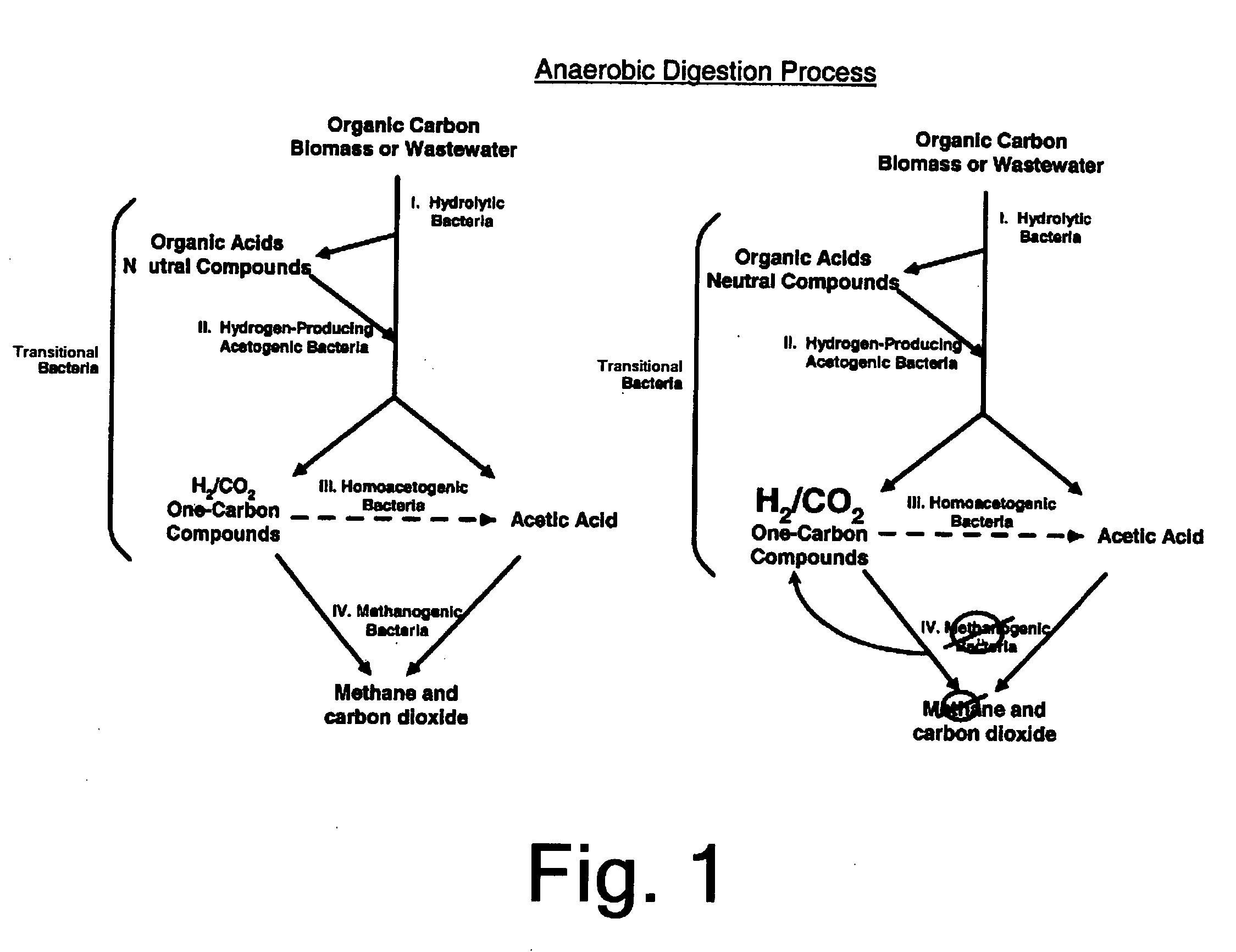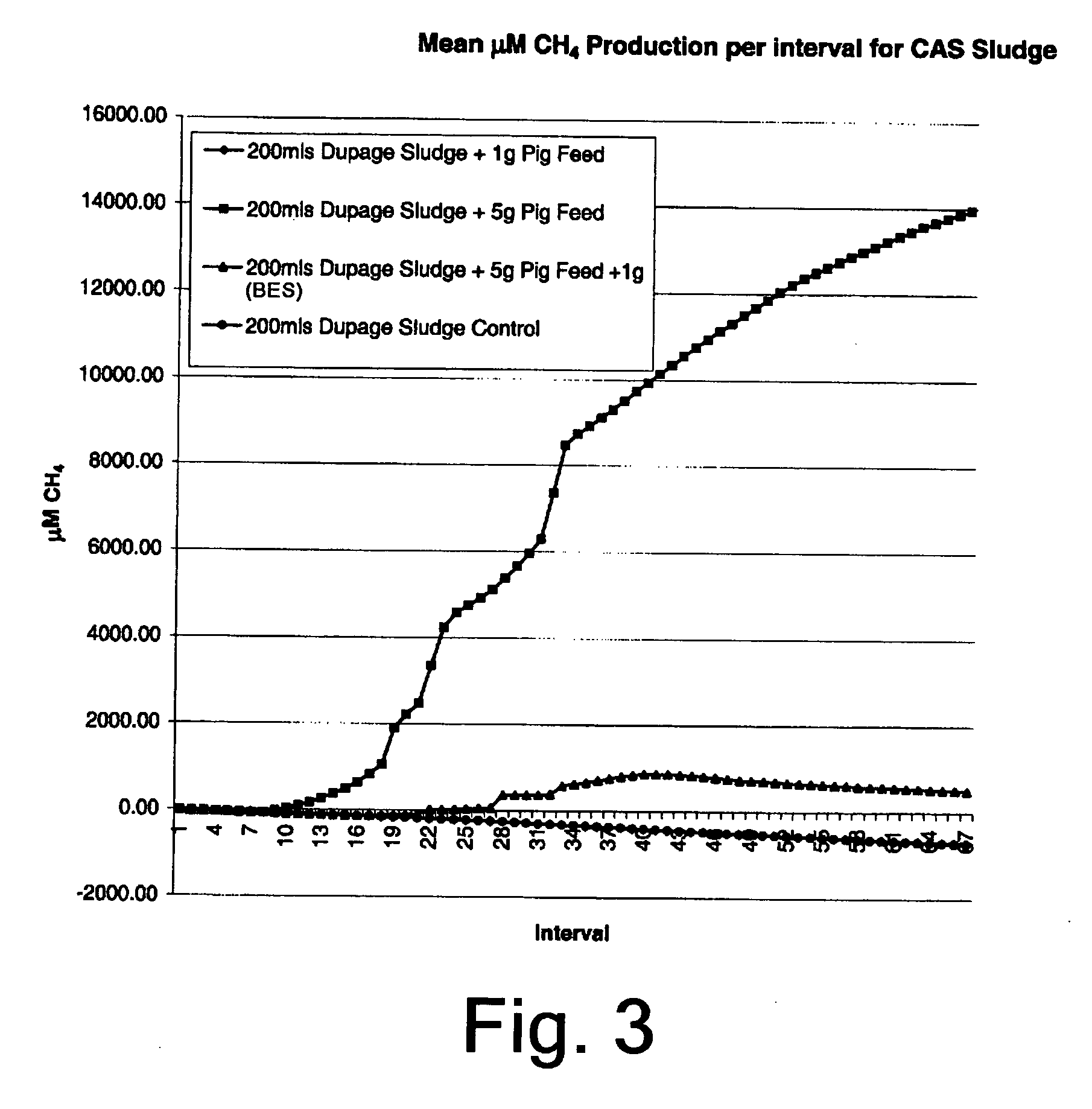Hydrogen production from organic wastes, manures and energy crops using a two-phase bioreactor system
a bioreactor and organic waste technology, applied in the field of two-phase anaerobic digestion of biodegradable feedstocks, can solve the problems of scum buildup, temperature fluctuations, and limited contact between organic material and bacteria, and achieve the effects of reducing the number of organic wastes, and improving the quality of organic wastes
- Summary
- Abstract
- Description
- Claims
- Application Information
AI Technical Summary
Benefits of technology
Problems solved by technology
Method used
Image
Examples
Embodiment Construction
[0023] This invention involves the use of anaerobic fermentative bacteria that generate hydrogen in the second stage anaerobic bioreactor of a two-stage anaerobic bioreactor system. The fatty acids, such as acetic acids, and other organic fermentation products from the first stage anaerobic bioreactor feed into the area surrounding the hollow semipermeable fibers in the second stage anaerobic bioreactor where it contacts the hydrogenogenic bacteria that form a biofilm on the outer surfaces of the hollow semipermeable fibers. This process slows the production of methane (CH4), but the methanogenic bacteria are inhibited from growth. This may be accomplished by the use of a selective inhibitor of methanogenic bacteria, such as bromoethane sulfonic acid (BES) or by mechanical means, such as maintaining the second stage anaerobic bioreactor at a short hydraulic retention time, typically 1 to 2 days, or by maintaining a pH that is too acidic for the methanogens (4, is suppressed.
[0024]F...
PUM
 Login to View More
Login to View More Abstract
Description
Claims
Application Information
 Login to View More
Login to View More - R&D
- Intellectual Property
- Life Sciences
- Materials
- Tech Scout
- Unparalleled Data Quality
- Higher Quality Content
- 60% Fewer Hallucinations
Browse by: Latest US Patents, China's latest patents, Technical Efficacy Thesaurus, Application Domain, Technology Topic, Popular Technical Reports.
© 2025 PatSnap. All rights reserved.Legal|Privacy policy|Modern Slavery Act Transparency Statement|Sitemap|About US| Contact US: help@patsnap.com



